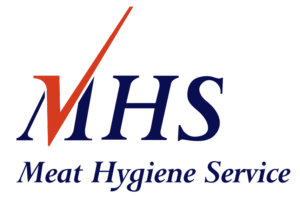Putting the right people in the right places to deliver high standards of service
During a wide-ranging business transformation programme, the Meat Hygiene Service used Esri’s ArcGIS Server to help make informed decisions about the future of its organisation. It then continued to use GIS to improve operational efficiency and enhance communication with partners.
The Customer
The Meat Hygiene Service (MHS) is an executive agency of the Food Standards Agency (FSA) that is responsible for protecting public health and animal welfare. It has a statutory duty to provide veterinary and meat hygiene inspectors on demand, 24 hours a day, 365 days a year, across England, Scotland and Wales; slaughterhouses can only operate in the presence of MHS veterinary and meat hygiene inspectors.
The Meat Hygiene Service used ArcGIS to inform important decisions about the reorganisation of its business into regional clusters
ArcGIS helps the organisation to allocate the right people with the right skills to the best locations, improving operational efficiency and customer service
ArcGIS aids communication with partners, particularly vital during suspected outbreaks of animal disease
The Challenge
The MHS was committed to wide-ranging business transformation, led by senior executives with a clear vision of a more efficient organisation delivering a good and consistent service. Jenny Sergeant, IT Director, had a detailed knowledge of geographic information systems (GIS), but GIS was not used within MHS: “I wanted to try to raise an appetite for GIS with my colleagues, because I could see a thousand different ways that it could benefit the business, particularly during this period of transformation.” One day, she found some business users huddled around two large printed maps. “They were using pieces of coloured paper and sticky tape to mark out the proposed new areas that would be created from the business transformation. I just had to show them that there was a much better way.”
The Esri UK consultant was exceptionally good and worked very well with the person designated to become our new in-house GIS expert
Jenny Sergeant – IT Director
The Solution
MHS implemented a single repository for spatial data, based on ArcGIS Server and linked to existing business systems, so that GIS applications always use current data. Next, MHS identified business critical applications that could quickly add value during the restructuring. In addition, a consultant worked on-site to share expertise and transfer skills. “The Esri UK consultant was exceptionally good and worked very well with the person designated to become our new in-house GIS expert”, says Sergeant.
ArcGIS makes the business intelligence and knowledge that we have easier to understand. We can therefore use it to make better informed business decisions
Jenny Sergeant – IT Director
The Benefits
Sergeant believes ArcGIS was crucial in re-structuring MHS. “It allowed us to make informed decisions about the future and the direction we want to take”, she says. Business manager Martin Evans explains: “We used ArcGIS to create 37 clusters of similar business value, taking into account the numbers of plants, the locations of staff, the geography of the area and the road infrastructure.” Changes to the plans were reflected in the GIS in a couple of hours, rather than up to six weeks with paper maps. Regional offices have gone and business managers and veterinary managers are homebased and grouped in clusters. MHS can clearly see which plants produce which meat products and allocate staff based on location and individual skills and qualifications. MHS monitors clusters, making adjustments where necessary. For example, flexibly allocating staff to where they are most needed, improving cost efficiency and service levels.
Human resources is benefitting too. Identifying mutually convenient locations for training is easy with GIS (but difficult from a spreadsheet). “It helps us to cut costs by reducing the need for long journeys and overnight stays”, says Sergeant. In addition, MHS uses maps to explore sickness patterns; managers can drill down to identify trends by region, plant and individual. “ArcGIS makes the business intelligence and knowledge that we have easier to understand. We can therefore use it to make better informed business decisions.” The service levels MHS provides are more consistent across regions. “Using a map, we can easily see the number of animals per employee in each plant… We can then make sure that we allocate similar numbers of staff to plants of similar sizes. This enables us to deliver a consistent approach to law enforcement across the country.”
Sharing spatial information is also easier, because DEFRA and the FSA already used Esri GIS. When there is an outbreak of animal disease, for example, MHS can load a DEFRA map of the affected zone. “Instead of having to hand-draw the protection and surveillance zones on a map, we can immediately see which plants are not operating and which employees can be reallocated to other plants”, says Sergeant. Similarly, as soon as MHS receives notification of a suspected case of disease, it can distribute accurate maps to veterinary experts, so they can be alert for nearby cases.
MHS plans a new IT infrastructure for its refurbished offices, including ArcGIS over its intranet, so that “it will be available as a means for everyone to access any information that they might need to support all aspects of their work, using ArcGIS as an everyday business tool” says Sergeant.



